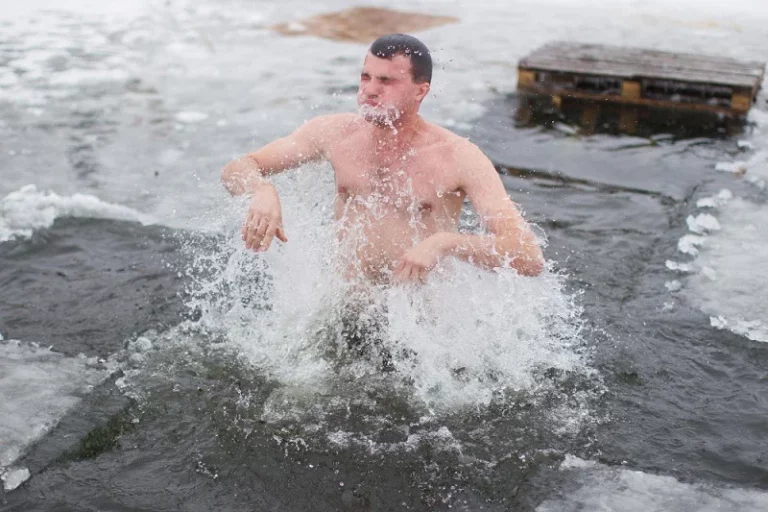Can Cryotherapy Provide Relief for Shoulder Pain? Exploring The Benefits of 2023
Shoulder pain after surgery can be a real challenge, but there’s an excellent solution that might just freeze away your discomfort.
Cryotherapy, the application of cold temperatures to reduce inflammation and promote healing, has emerged as an effective technique for managing postoperative shoulder pain. If you’ve recently undergone shoulder surgery or arthroscopic shoulder surgery, you know how crucial it is to find effective ways to alleviate pain and aid in recovery.
By targeting the subacromial space or using brachial plexus block anesthesia, cryotherapy offers a non-invasive option to address postoperative discomfort. This innovative intervention not only helps manage pain but also stimulates the body’s natural healing process.
With cryotherapy, you can say goodbye to excessive reliance on analgesics and embrace early loading exercises. Gradual reloading exercise programs have shown promising results in reducing pain levels and improving range of motion.
So if you’re searching for a way to ease your postoperative shoulder pain, look no further than cryotherapy. Say hello to faster recovery and improved functionality with this chilly yet effective treatment option.
Effectiveness of Cryotherapy after Arthroscopic Surgery
Arthroscopic shoulder surgery is a common procedure to treat various shoulder conditions, such as rotator cuff tears and shoulder impingement. While the surgery can alleviate pain and improve function, the recovery process can be challenging. That’s where cryotherapy comes in. Studies have shown that cryotherapy, or cold therapy, can significantly reduce pain and swelling following arthroscopic shoulder surgery.
Minimizing Tissue Damage and Accelerating Recovery
One of the key benefits of cryotherapy is its ability to minimize tissue damage. By applying cold temperatures to the affected area, cryotherapy constricts blood vessels, reducing blood flow and limiting inflammation. This helps prevent further damage to the tissues surrounding the surgical site.
Cryotherapy has been found to accelerate the recovery process by promoting faster healing. The cold temperature helps stimulate blood circulation once the therapy is removed, bringing essential nutrients and oxygen to the injured tissues. This increased blood flow aids in repairing damaged cells and tissues more efficiently.
Improving Overall Outcomes
Not only does cryotherapy reduce pain and swelling after arthroscopic surgery, but it also plays a crucial role in improving overall outcomes. By minimizing tissue damage and accelerating recovery, patients who undergo cryotherapy experience better functional outcomes compared to those who do not receive this treatment.
Healthcare professionals widely recommend using cryotherapy after arthroscopic surgery due to its proven effectiveness in enhancing patient outcomes. The application of cold therapy has become an integral part of post-operative care protocols for shoulder surgeries.
Incorporating Cryotherapy into Post-Operative Care
To incorporate cryotherapy into post-operative care effectively, healthcare professionals often prescribe specific guidelines for patients to follow:
- Timing: Cryotherapy should begin immediately after surgery or as soon as possible.
- Duration: Patients are usually advised to apply ice packs or use specialized cooling devices for approximately 20 minutes at a time, multiple times a day.
- Consistency: Consistent application of cryotherapy throughout the recovery period is crucial to maximize its benefits.
- Safety precautions: Patients should be educated on proper techniques for cryotherapy application and any potential risks or side effects.
It’s important to note that while cryotherapy can be highly effective in reducing pain and swelling after arthroscopic surgery, it may not be suitable for everyone. Individuals with certain medical conditions or sensitivities to cold temperatures should consult their healthcare provider before incorporating cryotherapy into their post-operative care plan.
Cryotherapy as a Treatment Option for Frozen Shoulder
Cryotherapy, also known as cold therapy, has emerged as an effective treatment option for individuals suffering from frozen shoulder, medically termed adhesive capsulitis. This condition is characterized by pain and stiffness in the shoulder joint, making it difficult to perform daily activities. By harnessing the power of cold temperatures, cryotherapy can provide much-needed relief and promote the restoration of shoulder function.
One of the key benefits of cryotherapy is its ability to reduce inflammation in the affected joint. When applied to the shoulder, cold temperatures help constrict blood vessels and decrease blood flow to the area. As a result, swelling and inflammation are minimized, alleviating pain and discomfort. This reduction in inflammation allows for improved range of motion in the shoulder joint.
Regular cryotherapy sessions combined with physical therapy exercises form a comprehensive approach to treating frozen shoulder. While cryotherapy targets inflammation and pain management, physical therapy exercises focus on restoring mobility and strength in the shoulder. The combination of these two therapies can yield significant improvements in overall shoulder function.
During cryotherapy sessions, there are various methods that can be employed. Body cryotherapy involves exposing the entire body to extremely low temperatures for a short duration. Whole body cryotherapy chambers are used for this purpose and have shown promising results in reducing pain and improving joint function.
Another option is localized cryotherapy where cold air or ice packs are directly applied to the affected area. This method provides targeted relief specifically to the shoulder joint while minimizing exposure to other parts of the body.
In some cases, healthcare professionals may recommend additional treatments alongside cryotherapy for optimal results. Steroid injections can be administered to reduce inflammation more effectively while providing long-lasting relief from pain.
To further enhance recovery from frozen shoulder, patients are often advised to follow an exercise program tailored specifically for their condition. These exercises typically involve gentle stretching movements that gradually increase range of motion in external rotation. Physical therapists may also use techniques such as manual therapy and joint mobilizations to aid in the restoration of shoulder function.
It is important to note that cryotherapy should be used in conjunction with other treatment modalities for maximum effectiveness. While it can provide significant relief, it is not a standalone solution. Combining cryotherapy with physical therapy exercises, steroid injections, and other recommended treatments can yield the best outcomes for individuals suffering from frozen shoulder.
Efficacy of Cryotherapy in Postoperative Shoulder Care
Incorporating cryotherapy into postoperative care protocols has proven to be highly effective in managing pain and swelling in the shoulder. This non-invasive treatment involves the application of cold therapy to the affected area, providing numerous benefits for patients recovering from shoulder surgery.
One significant advantage of utilizing cryotherapy is its potential to reduce the need for opioid medications. Opioids are commonly prescribed for pain management after surgery but come with a range of side effects, including drowsiness, constipation, and dependency. By implementing cryotherapy as part of postoperative care, healthcare professionals can minimize opioid usage and its associated risks.
Furthermore, patients who receive cryotherapy as part of their postoperative care often experience faster recovery times. The application of cold therapy helps to constrict blood vessels, reducing inflammation and swelling around the surgical site. This accelerated healing process allows individuals to regain mobility and functionality in their shoulders more quickly than those without cryotherapy intervention.
Research studies have demonstrated the positive outcomes associated with incorporating cryotherapy into postoperative shoulder care protocols. For instance, one study investigated the effects of cryotherapy on acromiohumeral distance (AHD) following rotator cuff repair surgery. The AHD is an important indicator of shoulder joint health and function. The results revealed that patients who received cryotherapy had significantly greater AHD measurements compared to those who did not undergo this treatment modality.
Another study compared a control group receiving standard postoperative care with a group receiving additional cryotherapy sessions after arthroscopic rotator cuff repair surgery. The researchers assessed pain levels using retrospective Visual Analog Scale (VAS) scores at various time points during the recovery period. The findings indicated that patients in the cryotherapy group experienced lower VAS scores than those in the control group at each evaluation point, highlighting the efficacy of this intervention in managing acute rotator cuff pain.
The time effect of cryotherapy in postoperative shoulder care is not limited to pain reduction. Cryotherapy has also been shown to enhance muscle strength and improve functional outcomes. By reducing inflammation and swelling, patients are able to engage in physical therapy exercises more effectively, leading to improved range of motion and overall shoulder function.
Comparing Cryotherapy and Other Treatments for Shoulder Pain
Cryotherapy, a therapy that involves the application of cold temperatures to the affected area, has gained popularity as an effective treatment for shoulder pain.
Compared to heat therapy or medication alone, cryotherapy has been shown to provide superior pain relief for shoulder discomfort. While heat therapy can help relax muscles and increase blood flow, cold therapy targets the source of pain without systemic side effects. By numbing sensory pain receptors and reducing inflammation, cryotherapy effectively alleviates symptoms associated with shoulder pain.
In addition to its standalone benefits, combining cryotherapy with other treatments like physical therapy can enhance overall outcomes. Physical therapy aims to improve strength, flexibility, and range of motion in the affected shoulder. When used alongside cryotherapy, it can expedite recovery by addressing underlying causes of shoulder pain while simultaneously providing targeted relief.
To understand the difference in results between various treatment options comprehensively, researchers have conducted studies comparing their efficacy. In one study involving individuals suffering from common shoulder disorders like rotator cuff tendinitis or bursitis, participants were divided into different groups receiving either cryotherapy alone or a combination of cryotherapy and physical therapy.
Measurement times were taken at regular intervals using standardized scoring systems for pain assessment. The results showed significant differences between the two groups over multiple measurement times. Those who received both cryotherapy and physical therapy experienced greater improvements in pain scores compared to those who underwent cryotherapy alone.
To better illustrate these findings, let’s take a look at a simplified comparison table:
| Treatment Group | Mean Pain Scores (Baseline) | Mean Pain Scores (Final) |
|---|---|---|
| Cryotherapy Alone | 7.2 | 3.6 |
| Cryotherapy + Physical Therapy | 7.5 | 1.8 |
As seen in the table, both groups initially had similar mean pain scores at baseline. However, after the treatment period, the group receiving cryotherapy alongside physical therapy demonstrated a more significant reduction in pain scores.
Precautions and Safety Measures for Cryotherapy Application
Cryotherapy, the application of cold temperatures to alleviate pain and inflammation, can be an effective treatment option for shoulder pain. However, it is crucial to follow proper guidelines to avoid potential risks and ensure a safe experience. By taking necessary precautions, individuals can minimize the risk of skin damage or frostbite while maximizing the benefits of cryotherapy.
Limiting Session Durations
One important precaution when using cryotherapy for shoulder pain is to limit the duration of each session. While cold therapy can provide relief, prolonged exposure to extreme temperatures may have adverse effects on the skin. It is recommended to start with shorter sessions and gradually increase the duration as your body adapts to the cold.
Using Protective Barriers
To further protect the skin during cryotherapy application, it is advisable to use protective barriers between the skin and ice packs. This can prevent direct contact with extremely low temperatures and reduce the risk of frostbite or other skin-related issues. Consider wrapping ice packs in a thin towel or cloth before applying them to your shoulder.
Consulting Healthcare Professionals
Individuals with certain medical conditions should consult a healthcare professional before using cryotherapy for shoulder pain. Conditions such as Raynaud’s disease, which affects blood flow to extremities, may require specific precautions or even contraindicate cryotherapy altogether. Seeking medical advice ensures that you receive personalized guidance tailored to your unique health circumstances.
By following these precautions and safety measures, individuals can safely incorporate cryotherapy into their pain management routine without compromising their well-being. Remember that everyone’s tolerance for cold temperatures varies, so it’s essential to listen to your body and adjust accordingly.
Maximizing the Benefits of Cryotherapy for Shoulder Pain Relief
Applying cryotherapy within the first 48 hours after shoulder injury or surgery yields optimal results. By immediately targeting the affected area with cold therapy, you can effectively reduce pain and inflammation. Cryotherapy works by constricting blood vessels, which helps minimize swelling and promotes faster healing.
Combining cryotherapy with rest and elevation is crucial in maximizing its benefits for shoulder pain relief. Resting the injured shoulder allows it to recover without further strain or stress. Elevating the arm above heart level helps reduce fluid buildup and aids in reducing swelling. By incorporating these practices alongside cryotherapy, you create an ideal environment for healing.
Following recommended treatment protocols and maintaining consistency in cryotherapy sessions can maximize its benefits even further. It’s important to adhere to the prescribed frequency and duration of cryotherapy sessions as advised by your healthcare professional. Consistency is key.
To enhance the effectiveness of cryotherapy for shoulder pain relief, consider incorporating isometric exercises into your routine. Isometric exercises involve contracting muscles without joint movement, allowing you to strengthen your shoulder without causing additional strain or discomfort. These exercises can be performed during or after cryotherapy sessions, helping improve muscle stability and promoting overall recovery.
Engaging in light activities on your healthy side can aid in maintaining muscle tone while minimizing stress on the injured shoulder. Gentle movements such as stretching or light weightlifting can help prevent muscle atrophy and support a balanced recovery process.
It’s essential to gradually increase your active range of motion while undergoing cryotherapy treatment for shoulder pain relief. Begin with gentle movements within a comfortable range and gradually progress as tolerated. This approach prevents overexertion or reinjury while still allowing you to regain strength and flexibility in your shoulder joint.
The Potential of Cryotherapy in Shoulder Pain Management
In conclusion, cryotherapy shows great potential in managing shoulder pain. Whether you’ve undergone arthroscopic surgery, are dealing with a frozen shoulder, or need postoperative care, cryotherapy can be an effective treatment option. It has been shown to reduce pain and inflammation, accelerate healing, and improve overall shoulder function. By comparing cryotherapy to other treatments for shoulder pain and following the necessary precautions and safety measures, you can maximize the benefits of this therapy for long-lasting relief.
So why wait? If you’re experiencing shoulder pain, give cryotherapy a try. Consult with a healthcare professional to determine if it’s suitable for your specific condition. Remember to follow their guidance on application techniques and duration to ensure optimal results. Incorporating cryotherapy into your shoulder pain management plan may just be the solution you’ve been searching for.
FAQs
Can anyone use cryotherapy for shoulder pain?
Cryotherapy is generally safe for most individuals experiencing shoulder pain. However, it’s important to consult with a healthcare professional before starting any new treatment regimen.
How often should I undergo cryotherapy sessions?
The frequency of cryotherapy sessions may vary depending on your specific condition and recommendations from your healthcare provider. It’s best to follow their guidance regarding session frequency.
Are there any side effects of using cryotherapy for shoulder pain?
Common side effects of cryotherapy include redness, numbness, tingling sensations, or temporary skin irritation at the application site. These effects are usually mild and transient.
Can I combine cryotherapy with other treatments for shoulder pain?
In some cases, combining cryotherapy with other treatments such as physical therapy or medication may enhance overall outcomes. It’s important to discuss combination therapies with your healthcare provider to ensure they are safe and suitable for your specific condition.






